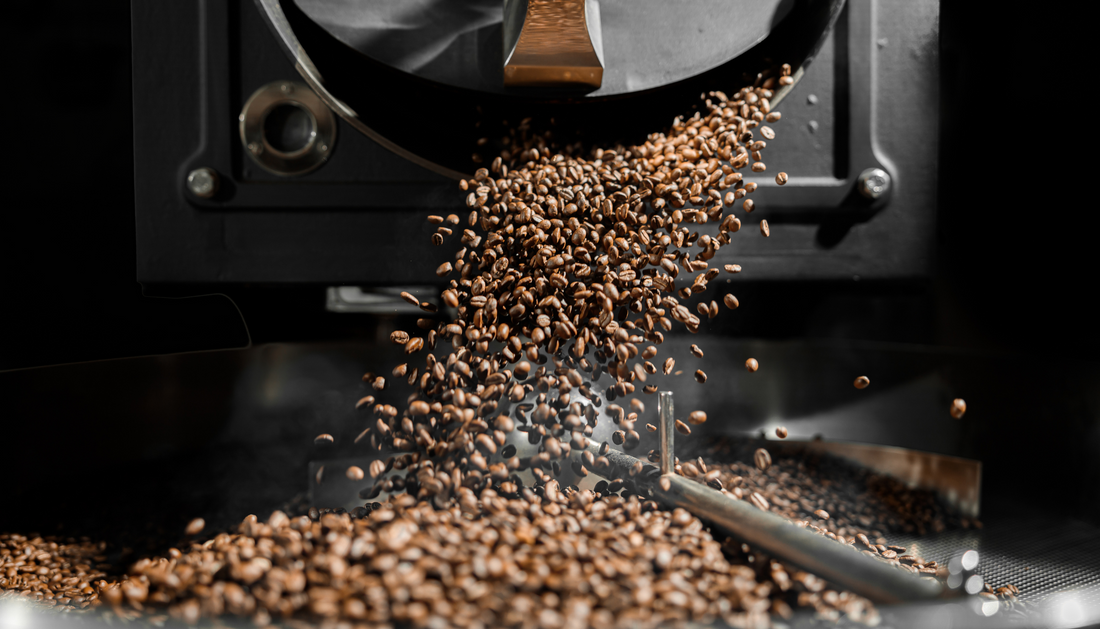
Mastering Coffee Roasting: Understanding Weight Loss in Specialty Coffee
The art of coffee roasting is as much about precision as it is about flavour. For specialty coffee roasters, understanding every detail—from the quality of green beans to their moisture content—is crucial for delivering a consistent, high-quality cup. One key factor that affects the roasting process and the final product is the weight loss coffee beans undergo during roasting.
Why Do Coffee Beans Lose Weight During Roasting?Coffee cherries, like all fruits, are naturally full of moisture. Green coffee beans, derived from the seeds of the cherries, retain a portion of this moisture. During roasting, heat triggers the evaporation of water and other volatile compounds, leading to a reduction in the beans' weight.
On average, green coffee beans contain 8% to 12.5% moisture—the ideal range for specialty coffee, according to the International Coffee Association (ICA). If the moisture content is too low (below 8%), the beans may roast unevenly, resulting in a lack of complexity and undesirable flavours. Conversely, moisture levels above 12.5% can lead to mould and spoilage, compromising the coffee’s quality and value.
How Much Weight Do Coffee Beans Lose?During a typical roast, coffee beans lose between 15% and 18% of their weight. This is primarily due to moisture evaporation, though some weight is also lost as the outer layers of the bean—such as the silverskin—detach and are discarded as chaff.
For example, roasting a 10kg bag of green coffee beans usually yields 8.2kg to 8.5kg of roasted beans. The darker the roast, the more weight is lost due to prolonged exposure to heat, which evaporates more moisture and breaks down additional organic matter.
Challenges for Specialty Coffee RoastersFor roasters, weight loss during roasting is both a technical and financial consideration. Green coffee is purchased by weight, and the roasted beans are also sold by weight. Any moisture loss directly impacts yield and, consequently, profit margins.
Another challenge lies in managing the moisture content of green beans. Moisture levels can fluctuate during transit, especially when beans are shipped in humid conditions. A bag of green beans that measures 14% moisture on arrival—above the ideal range—means paying for water weight that does not contribute to the final coffee yield.
Managing Weight Loss and Moisture ContentSpecialty coffee roasters can minimise the impact of weight loss with thoughtful preparation and consistent monitoring.
-
Measuring Moisture Content:
Invest in moisture meters to independently verify the moisture content of green beans. Setting clear parameters for acceptable moisture levels (e.g., 10% to 12%) in contracts with suppliers can also ensure you’re getting what you pay for. -
Adjusting Roast Profiles:
Lighter roasts typically retain more moisture, resulting in slightly lower weight loss. However, the roast profile must suit the specific bean variety and desired flavour characteristics to preserve the integrity of specialty coffee. -
Optimal Storage Practices:
Green beans should be stored in temperature-controlled environments (around 20°C) with stable humidity levels. Using hermetically sealed bags and ensuring airflow around the bags can prevent moisture reabsorption and spoilage. -
Planning for Yield:
Roasters should factor in expected weight loss when calculating batch sizes and inventory needs, ensuring they maintain consistency in production and profitability.
Specialty coffee roasters focus on delivering exceptional quality, often working with smaller batch sizes and higher-grade beans. Every gram counts. By carefully monitoring moisture content, understanding weight loss trends, and refining their roast profiles, they can preserve the unique characteristics of each coffee while optimising yield.
Have Questions or Want to Discuss Coffee?We’re passionate about sharing knowledge and connecting with fellow coffee enthusiasts. If you have any questions about roasting or want to discuss specialty coffee in more detail, we’d love to hear from you! Contact us today and let’s talk coffee.
